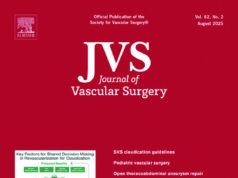
Medical editor Malachi Sheahan III, MD, takes a look at seemingly conflicting results from the landmark BEST-CLI and BASIL-2 trials, and asks what they really reveal.
This past April, BASIL-2 chief investigator Andrew Bradbury, MD, presented trial results at the Charing Cross (CX) International Symposium in London. The authors concluded that an endovascular-first approach to patients with critical limb-threatening ischemia (CLTI) who required an infrapopliteal intervention was associated with better amputation-free survival. These findings seem to be a direct contradiction to the bypass-first approach supported by the BEST-CLI study. So what do we do when two major trials report conflicting data? That’s right, start a Flame War on Twitter. But before we bury the interventionalists in memes, let’s look at what these studies may actually be telling us.
BASIL-2 was an open-label, pragmatic, multicenter, randomized trial performed mainly in the United Kingdom. The primary outcome was amputation-free survival, which was higher in the endovascular treatment group than the bypass cohort (hazard ratio [HR] 1.35, p=0.037). But what drove this disparity? There was no difference in major amputation rate between the endo and open groups (18% vs. 20%) over the study period. Therefore, the difference in outcomes was mainly derived from the lower mortality in the endo patients (45% vs 53%).
Intuitively, one would think that the higher mortality in the open group would be associated with the risk of general anesthesia and the increased morbidity of surgery. The 30-day morbidity and mortality, however, were not statistically different between the treatment modality groups. What then drove this difference in survival? First, it should be noted that overall survival was fairly dismal, as one would expect from an aging population with severe peripheral vascular disease. It is often easy to get lost in the canyon between statistical significance and clinical significance. My back of the napkin math tells me that as few as five more deaths in the endo group over the study period might have robbed the endpoint of its statistical “significance.” Looking at the two groups, they seem pretty well matched, but the raw prevalence of previous myocardial infarction (24% vs. 13%) and previous dialysis (6% vs. 3%) were higher in the bypass cohort. Could this have been enough to generate a few more late deaths?
It is also important to note that in this intent-to-treat analysis, only 145 of the 172 patients in the bypass group underwent surgery. Since the difference in outcomes was mainly driven by late mortality, a look at the survival in each group of those actually receiving the treatment would be helpful.
Interestingly, the BASIL-2 results also seem to contradict a previously published subgroup analysis from the BASIL-1 trial, which suggested better outcomes with vein bypass than angioplasty in infrapopliteal revascularization.
Cohort 1 of the BEST-CLI trial was comprised of CLTI patients with an adequate saphenous vein who were randomized to either an endovascular- or surgery-first strategy. The study concluded that an initial surgical approach led to a lower risk of major adverse limb event or death. Cohort 1 enrolled more than four times as many patients as BASIL-2 and had many crucial differences in design. Participants were required to be good operative risks. The patients were younger and demonstrated more gender and ethnic diversity. Infrapopliteal revascularization was a requirement for BASIL-2 but only performed in about 60% of the BEST-CLI cohort 1. Perhaps most importantly, the primary measured outcome of BEST-CLI was a combined freedom from death, major amputation, and major reintervention, while BASIL-2 focused on amputation-free survival. Both BASIL-2 and BEST-CLI found significantly higher reintervention rates in the endo groups. So where to go from here? Luckily, the BEST-CLI and BASIL-2 investigators have a data-sharing agreement in place that should elucidate many of these questions in the future. Patient-level data and more detailed anatomic information are needed to provide any true guidance to the ideal therapy for CLTI.
Also, a disclaimer. These trials employed complex statistical modeling. This passage from the BASIL-2 manuscript made my eyes glaze over: “Binary secondary outcomes measured at a single timepoint were analyzed using a mixed effects log-binomial model to generate an adjusted risk ratio and risk difference (with an identity link function).” So, to paraphrase Michael Scott, I know exactly what I’m doing, but in a much more real sense, I have no idea what I’m doing. To this end, I have asked Michael Conte to provide a “smart guy” commentary to complement my own in this issue of Vascular Specialist.
While we await further analysis, should we employ an endo- or open-first strategy for CLTI? The answer is likely neither. The best approach is one suited to the individual patient. Of course, one could then argue that the best physician for this problem is one who can expertly offer either treatment paradigm. But I’ll leave that for the Twitterati. Don’t @ me.












